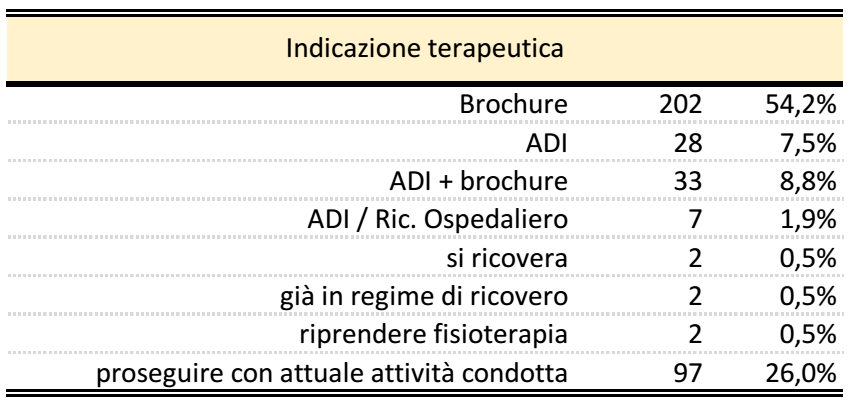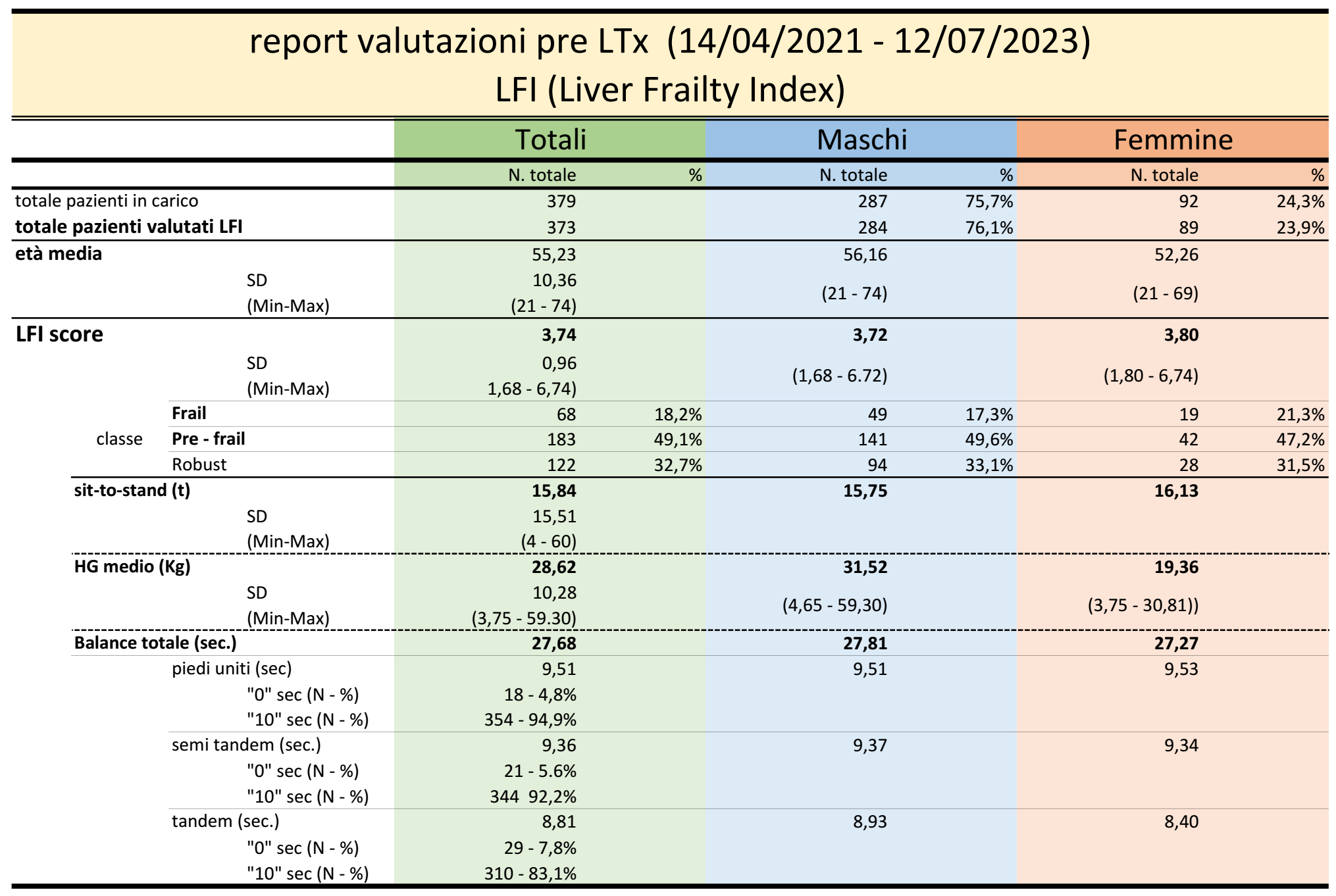Approccio multidisciplinare basato sullo screening della fragilità nei pazienti in attesa di trapianto di fegato presso ISMETT: analisi per personalizzare gli interventi e migliorare gli esiti
Multidisciplinary Approach Based on Frailty Screening in Liver Transplant Candidates at ISMETT: Analysis for Personalized Interventions and Improved Transplant Outcomes
Introduction
Frailty is a debilitating condition in organ transplant candidates. Accurate screening would enhance resource management during the waiting period.
Benefits of screening:
- Improved quality of life
- Impact on healthcare costs
- Precise identification of high-risk patients
Accurate frailty assessment provides indications for activation of territorial services with preventive measures, such as functional recovery programs and balanced diets.
According to the “National Transplant Center” for 2021 (3), there were 2,679 liver transplant registrations, with 1,388 transplants and 8.7% mortality on the waiting list, with a 15.5% drop-out rate.
Identifying frail patients optimizes resource allocation during the waiting period. The study’s aim was to map the liver transplant candidate population at ISMETT, identifying the most fragile subjects.
Methods
ISMETT is a transplant institute in Palermo. In the 2022 report, 91 liver transplants were performed, including 75 from deceased donors. Transplant activity began in 1998, with cadaveric, living donor, and split liver programs.
For liver transplant candidates, the physiotherapist’s evaluation was introduced into the assessment protocol, complemented by the “Liver Frailty Index” test since April 2021. Patients are stratified into three classes: “frail,” “pre-frail,” and “robust.”
Based on the test, frailty reassessment is scheduled at 1, 3, and 6 months for each class, with specific indications for activities and care settings, including ADI service activation, long-term hospitalization, or self-managed physiotherapy exercises using a brochure provided after patient instruction.
Data were collected in an Excel database, and statistical analysis was performed using means, standard deviations, minimum and maximum values, and stratification by gender
Results
A total of 379 consecutive patients were evaluated, excluding 6 due to inadequate test conditions. Male prevalence: 76.1% (n = 284), mean age: 55.23 years (range: 21-71, SD: 10.36), with no significant gender differences. Frailty assessment: mean 3.74 (range: 1.68-6.74, SD: 0.96), with no significant gender differences.
Distribution of patients by frailty classes: pre-frail (n = 183, 49.1%), frail (18.2%, n = 68), with no gender differences.
Analysis of individual test items: 94.9% passed the single-leg balance test, while 7.8% were unable to perform the tandem position test.
Therapeutic indication: A self-managed recovery exercise program through a brochure with predefined or patient-selected exercises was used for 54.2% of evaluated patients.
18.2% were recommended ADI service activation, with 7 preferably hospitalized if available. 26% received no additional activity indications (robust patients)
Discussion and Conclusion
The conclusions of our study allowed an accurate analysis of frailty in liver transplant candidates at ISMETT. Implementing the physiotherapist evaluation protocol and utilizing the Liver Frailty Index provided valuable insights for personalized interventions and a more detailed understanding of liver transplant recipients’ characteristics
A multidisciplinary approach based on frailty screening proves to be a valuable tool for enhancing management and customization of care for liver transplant candidates, aiming to adopt personalized interventions and improve transplant outcomes. However, the current data are partial and lacking in terms of transplant survival and adherence to therapeutic indications, as well as the actual support of territorial services.
Our study offers a crucial knowledge base, but further research and joint efforts are necessary to ensure optimal and personalized treatment for liver transplant candidates
REFERENCES
Haugen CE, McAdams-DeMarco M, Holscher CM, Ying H, Gurakar AO, Garonzik-Wang J, et al. Multicenter Study of Age, Frailty, and Waitlist Mortality Among Liver Transplant Candidates. Ann Surg. 2020 Jun;271(6):1132–6.
Centro Nazionale Trapianti. Rapporto annuale [ Internet ]. Available from: https://www.trapianti.salute.gov.it/imgs/C_17_cntPubblicazioni_506_allegato.pdf
Kwong AJ, Ebel NH, Kim WR, Lake JR, Smith JM, Schladt DP, et al. OPTN/SRTR 2020 Annual Data Report: Liver. Am J Transplant Off J Am Soc Transplant Am Soc Transpl Surg. 2022 Mar;22 Suppl 2:204–309
Lai JC, Covinsky KE, Dodge JL, Boscardin WJ, Segev DL, Roberts JP, et al. Development of a novel frailty index to predict mortality in patients with end‐stage liver disease. Hepatology. 2017 Aug;66(2):564–74


